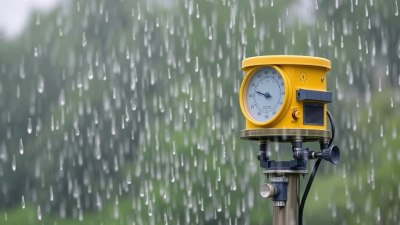How to Prepare Your Home for the Shift in Weather
Learn essential tips to prepare your home for seasonal weather changes effectively.

As the seasons change, so do the challenges that come with varying weather conditions. It's crucial to prepare your home appropriately to weatherproof it against elements like rain, snow, wind, or extreme temperatures. This guide will cover various strategies to help you get your house ready for the upcoming weather changes. From basic maintenance to enhancing your home’s energy efficiency, these tips aim to ensure that your home remains comfortable and safe throughout the year.
Assess Your Home's Exterior
The first step in preparing your home for weather changes is to assess its exterior. Examine your roof for missing shingles or tiles and check for any signs of leaks. If your home has gutters, ensure they are clean and free of debris to allow proper drainage during heavy rains. Overflowing gutters can cause water damage to the structure of your home. Pay attention to your siding and paint; peeling paint or damaged siding could lead to further issues if exposed to moisture and harsh winds.
Inspect and Maintain Your Windows and Doors
Windows and doors are critical areas where energy efficiency can make a difference. Check for drafts or any gaps around frames that could let in cold air during the winter or warm air in the summer. Weather stripping may need to be replaced, and caulk should fill gaps where necessary. For homes in colder climates, consider installing storm doors or window film. This added layer of insulation helps keep indoor temperatures stable and can significantly reduce energy costs.
Prepare Your HVAC System
Your heating, ventilation, and air conditioning (HVAC) system is vital for maintaining comfort in your home throughout changing weather conditions. Schedule maintenance checks before the temperatures start to fluctuate significantly. Replace air filters regularly to ensure efficient airflow and reduce allergens. In preparation for colder months, make sure your heating system is in good working order. If you rely on a fireplace or wood stove, have the chimney cleaned to prevent any fire risks.
Insulate Your Home
Proper insulation is crucial for weatherproofing your home. Insulation helps to maintain a consistent temperature, reducing your reliance on your HVAC system and lowering energy costs. Check the attic and walls for sufficient insulation, especially if your home is older. In colder climates, consider adding insulation to the basement and crawl spaces. Additionally, insulating pipes can prevent freezing during winter months, saving you from potential plumbing disasters.
Check Your Landscaping
Stock Up on Seasonal Supplies
Being prepared means having the right supplies at hand. As the weather shifts, stock up on necessities like ice melt, shovels, and gloves for winter months. For summer, make sure you have items like insect repellents and sunscreen. Additionally, prepare for storms by having flashlights, batteries, non-perishable food, and water stored away. These preparations can make weather-related events more manageable and keep your family safe.
Prepare for Severe Weather
In regions where severe weather is common, it’s wise to have an emergency plan. Know the safest areas of your home to seek shelter, be it for tornadoes, hurricanes, or winter storms. Have a supply kit ready that includes essential items—first aid supplies, food, and a way to communicate in case of power outages. Awareness of your local weather conditions and the types of severe weather prevalent in your area can prepare you mentally and physically.
Install Energy-efficient Features
Investing in energy-efficient features is not only beneficial for the environment but can also save you money. Consider options like Energy Star rated windows and appliances. Solar panels are becoming increasingly popular and for good reason; they can drastically reduce your energy bills and increase your home’s value. Installing programmable thermostats can help maintain energy efficiency, adjusting the temperature according to your schedule and minimizing waste.
Plan for Emergencies
Weather emergencies can happen anytime, and being unprepared can be overwhelming. Establish an emergency contact list and include local service providers, neighbors, and family. Create a plan for communication during crises, particularly if your family members are not all home at the same time. Regularly review and practice your emergency plan as a family, ensuring that everyone knows what to do in case of various weather events.
Monitor Weather Forecasts
Keeping an eye on weather updates can alert you to potential hazards. Utilize weather apps and alerts that can notify you of sudden changes. Preparing in advance allows you to take measures in a timely manner, rather than scrambling at the last minute. This could mean securing outdoor furniture before a storm or stocking up basic supplies at the grocery store.
Invest in Weatherproofing Products
There are various products available that can help weatherproof your home. From door sweeps to exterior weatherproof paints, consider using specialized products that can enhance your home’s protection. Consider applying sealants around windows, doors, and other entry points to prevent leaks. Utilize outdoor furniture covers or store away items that could be damaged during inclement weather.
Conduct Regular Property Inspections
Staying proactive with your home maintenance can save you in the long run. Conduct inspections at least twice a year to check for any developing issues before they become significant problems. Pay careful attention to areas prone to wear and tear, such as the basement and attic. Regular inspections paired with timely repairs ensure that your home can endure the varying elements throughout the year.
Prioritize Safety
In each season, prioritize safety measures to protect your home and loved ones. Install smoke and carbon monoxide detectors, ensuring that they are functional and have working batteries. During winter, keep a stock of emergency kits, including blankets, food, water, and a first aid kit. This attention to detail in safety can significantly reduce risks during severe weather conditions and emergencies.
In conclusion, preparing your home for shifts in weather requires a comprehensive approach. Regular maintenance, investing in energy-efficient products, and being proactive about severe weather can significantly improve your home’s resilience. By following these guidelines, you not only protect your investment but also create a safe and comfortable environment for you and your family across all seasons.











